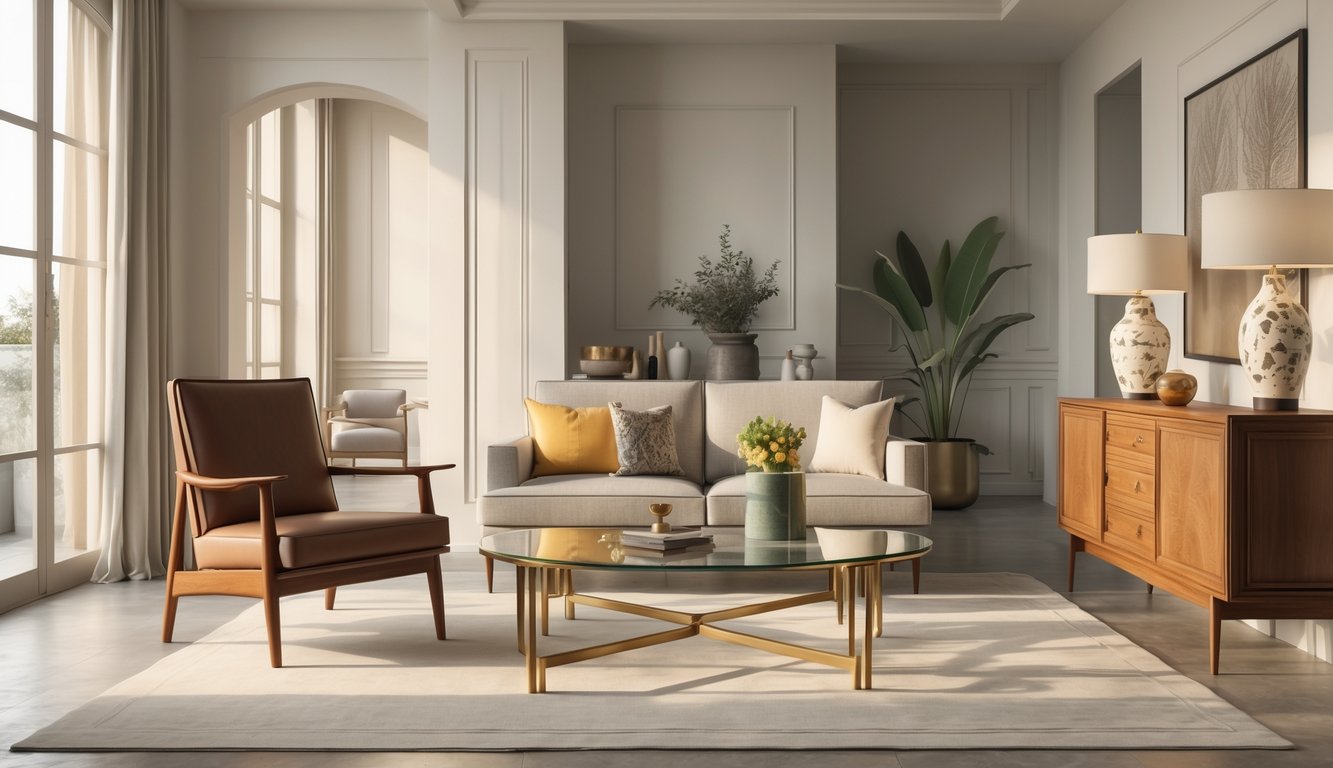
Furniture That Holds Its Value

People love to tell me their new shelf will “age well.” Sure. But the stuff that gets auction buzz? It’s always the same handful, while a sea of Ikea stuff sits out on the sidewalk. American Home Furnishings Alliance says well-made antiques can jump 40% in value over a decade. Designers constantly remind me, “Don’t cheap out on construction.” They’re not wrong.
Quality Furniture and Classic Designs
Estate sale pros swear by solid-wood furniture—walnut, oak, stuff with dovetail joints or hand-carved bits. If it’s signed by a legit maker (Stickley, Knoll), it never bottoms out. I’ve watched classic club chairs, Parsons tables, and Shaker benches sell for way more than loud, “disruptive” designs. Resale sites always favor clean lines and neutral fabrics. Designers say, “Classic always wins.” After selling my mid-century dresser for double what I paid, I can’t argue. Meanwhile, my neighbor’s lava lamp collection? Still depreciating. Go figure.
Vintage Furniture Versus Modern Furniture
People say vintage is for “old souls.” It’s really for anyone patient enough to wait for a deal. Vintage mid-century Danish teak, American 1920s oak—sometimes sells for 20-30% above original retail (Tracking The Market, 2023). Not all grandma furniture is gold, but authenticated, well-kept pieces always have buyers.
Modern “investment” furniture only holds up if it’s got a pedigree—limited editions from Herman Miller, numbered plaques, that sort of thing. Mass-market “designer-inspired” stuff? Cute, but resale tanks when trends shift. Ran into an appraiser who called patterned upholstery an “investment trap,” unless it’s a known classic. No one fights over neon accent chairs, but Eames lounges are basically design currency. My friend’s glossy sideboard sat unsold for months; a 1960s version got multiple offers in a week. The market makes zero sense sometimes.
Iconic Investment Pieces Insiders Recommend
Never seen a pristine mid-century piece tossed out for trash. People treat Eames chairs like secret society passwords. These classics—mid-century originals, Herman Miller tags, all those magazine darlings—don’t end up with sad price tags at estate sales. Even in a downturn, they hold up.
Mid-Century Modern Masterpieces
Last design panel I went to, people almost started a fight over “mid-century modern.” It’s not just hype—every record-breaking auction headline circles back to mid-century. Data from LiveAuctioneers and a bunch of resellers says untouched originals usually resell for 70–90% of their sticker price, sometimes more if you’re in a big city.
The real sign? Watching designers with decades of experience drag home battered Florence Knoll credenzas or Milo Baughman sofas, then toast to “value preservation.” I saw a Finn Juhl table double in value after a gallery restoration. It’s wild. Knockoffs are everywhere, but provenance, maker’s marks (tiny stamp under the leg), and paperwork? That’s the real gold. I once watched a dealer nearly cry after appraising an unsigned piece for half what a confirmed Knoll would get. And if you’ve ever tried hauling a Danish teak sideboard up a fifth-floor walk-up, you know regret.
Eames Lounge Chair and Herman Miller Classics
Okay, so the Eames Lounge Chair—people never stop asking if it’s overrated. I mean, sure, maybe it is, but then why is it still, what, $8,000-plus for a new one? And the used ones? Basically don’t move in price, which is just… confusing. I keep getting emails from random buyers desperate for a Herman Miller-stamped version, like, “Will pay 30% over retail if it’s pristine!” (Who are these people? Do they exist outside of forums?) The 1956 rosewood ones with all the tufted buttons? Still popping up at auctions, sometimes with six-figure starting bids. Can nostalgia really be this expensive? Apparently.
Herman Miller’s got this weird cult status. Some design people—especially the ones who drop “investment profile” every other sentence—act like the build quality’s sacred. I had a corporate client once go on and on about their Eames Aluminum Group chairs, how they sold nearly at cost after ten years in a lobby. (Sure, Jan.) Sitting in a real Eames Lounge? Always feels like a performance, because someone’s watching, judging, maybe waiting to pounce if you spill coffee. Even the knockoffs try so hard and just… never get it right. See the old patent stamp in the frame? Buy it, don’t buy it, whatever—you won’t have time to decide. Someone else will, probably in like, three days.